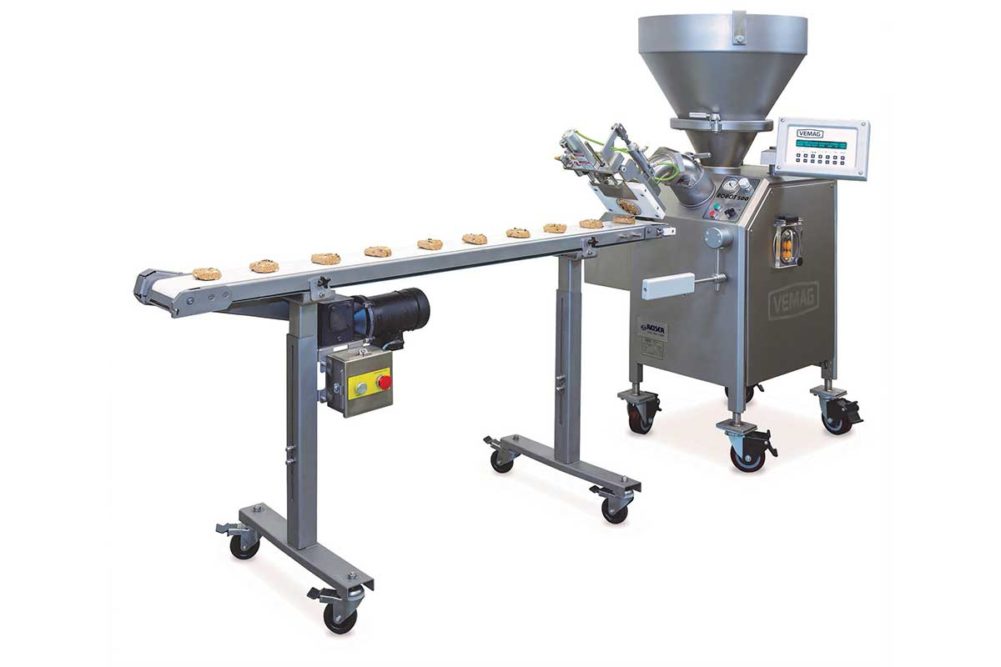Better-for-you (BFY) cookie dough that contains nuts, fruits and other inclusions can increase the level of difficulty when working with these doughs.
“In a real soft cookie dough with chocolate chips, the dough is nice and sticky, and the inclusions want to stay in there,” said Kevin Knott, technical sales manager, Bühler Inc. “With drier, denser, higher protein doughs, the inclusions want to come out of that suspension, so you’ve got to have a nice even pile — in some cases — a lower pile of dough in the hoppers. And in some cases, we also recommend putting the inclusions that might get destroyed into the mixer at the very last second rather than in with the other ingredients.”
Chilled inclusions tend to be firmer and can last longer in the process without getting damaged, he said, adding that another solution is applying them topically after extrusion.
Larger gaps between the rollers can minimize damage to the inclusions. The range on Reading Bakery Systems rolls can be between 8 mm and 12 mm, depending on the size of the inclusion, said Sam Pallottini, director of cookie, cracker and pet food sales at Reading Bakery Systems.
Of course, the ingredients need to be dispersed evenly to ensure a consistent weight among product pieces.
“Maintain a minimum, even dough level within the hopper to safeguard against bridging and ensure an even feed,” said Andy Green, technical development manager, Spooner Vicars, a Middleby Bakery company. “Consider the use of a heated, jacketed hopper to keep the dough more workable.”
For wirecutters running BFY dough with inclusions, Mark Glover, product manager, baked products and extrusion, Baker Perkins, recommended that bakeries consider using a blade rather than a wire. Baker Perkins offers a wire break detection device to minimize downtime.
Mr. Knott also advised that blades can be useful for dry doughs.
[Related reading: High-protein cookie doughs can be high maintenance]
“For some of the newer products with tougher doughs, we’ve had to go to a blade instead of a wire. And in some cases with a lot of inclusions, we’ve had to go with an oscillating blade,” he noted. “Instead of getting a dead hit on the inclusions it’s kind of a small amount of sawing.”
Manufacturers producing BFY cookies are even finding ways to put extra protein in the cookie coatings. These include not only outside coatings but also the crème inside a wafer cookie.
“In the compound coating, they’re actually increasing the protein level of the coating itself,” Mr. Knott said. “It doesn’t flow as nicely as real chocolate or the old-fashioned chocolate compound. There is a little bit of work that needs to be done on setup of an enrober with a BFY coating.”
That work includes tighter temperature controls, which, in some cases, are higher temperatures to keep a consistent density of the coating before it’s applied.
BFY doughs present challenges for bakeries, but there are many ways in which bakers can handle these difficulties when they adopt best practices.
“It’s really about time,” said Jim Fontaine, bakery field sales manager for Reiser. “Those doughs change so dramatically with time. In the production process, it’s always about time and temperature, but even more so with these types of doughs.”
This article is an excerpt from the August 2021 issue of Baking & Snack. To read the entire feature on Cookies, click here.





